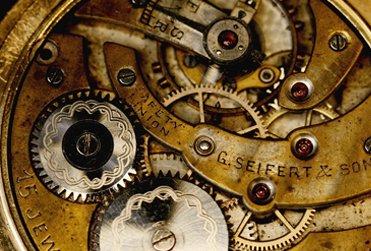
Although the history of time measuring devices goes as far back as 2000 BC with various mechanisms such as the well-known hourglass, it was only in the last 250 years or so that wristwatches entered people's daily lives. In today's time, seeing the time is so easy that most people don't even think about it (smartphones, tablets, PCs, etc.), a wristwatch, however, is not just a machine that tells the time. Indeed, wristwatches from their very beginnings (dating back to 1810 when Abraham-Louis Breguet made the first wristwatch for the Queen of Naples) have been a jewel, a testament to high aesthetics as well as detailed engineering.
Today, we will see how these peculiar jewel-tools strike, the various mechanisms that power their operation, the heart of watches.
So let's take a closer look at the 3 most famous watch mechanisms in chronological order:
1) Mechanical watches
Mechanical were all clocks, whether wall or pocket or the first wristwatches for a very long time.
How such a mechanism works is not easily described as apart from its complexity, there were many different mechanisms.
Briefly, however, a mechanical clock is "driven" by a cylinder which must be wound at intervals. The force generated is transmitted through a series of gears to power the balance wheel, a weighted wheel that oscillates back and forth at a constant rate.

Complex to understand and even more so to implement, mechanical watches are stunning examples of detailed engineering and for many years were the only tools for telling time.
A big advantage of them is the fact that since they do not work with a battery that is consumable the average life of these watches is much longer than the others that we will talk about below while their main disadvantages are the cost of their production and the fact that they have to to be tuned otherwise they stop working .

2) Automatic watches
Automatic watches could be said to be the new generation of mechanics. In fact, automatics are mechanical watches with the only difference that they do not need to be wound. A self-winding movement had been invented since 1770 but the first real self-winding wristwatch was invented in 1929 by the British John Harwood. An automatic watch, instead of winding, "gets" the required energy from the movement of the wearer's wrist. It has a mechanism that rotates the mainspring using the natural movements of the user's body.
Such a mechanism changed the global watchmaking market forever as its benefits are many. However, a major disadvantage of these clocks is that they are more easily affected by altitude and pressure factors so there are some small deviations and inaccuracies in the time they show.
Moreover, if such a watch is not worn for some time, due to the lack of kinetic energy it stops working and will "start" after being worn for some time.
However, the charm of automatic movements, the attention to detail and the exquisite aesthetics of many automatic watches, made them dominate for many decades.

3) Battery-quartz watches
The last category belongs to watches that are powered by a battery. Quartz watches first appeared in 1969 with the Seiko Quartz-Astron 35SQ and in 1970 with the Omega Electroquartz . Unlike the other two categories, these watches do not use gears and a spring, do not have a complex mechanical mechanism in them and do not need to be wound to function. They use an electronic oscillator regulated by a quartz crystal to keep time. This crystal oscillator generates a signal with a very precise frequency.

For this reason quartz watches are much more accurate compared to the rest and their deviations are, in general, a few seconds per month and are not affected by different altitudes (although they can be affected by very low temperatures). Also, due to their simpler mechanism, they are more durable.
One of their disadvantages, however, is the fact that the battery is expendable and should be changed at intervals.
In summary, these are the three basic clock mechanisms that we all encounter in our daily lives. Of course, there are other (sub)categories such as smartwatches and solar watches.
The world of watches is a magical world, full of innovations, special designs, excellent materials and a passion for precision. All 3 movements have their advantages and disadvantages and although classic mechanical watches that need to be wound are no longer produced, they were the beginning of wristwatches.
If you are looking for the watch that will win you over with its special air, you can see the entire Goldy collection of automatic and quartz watches or see them all here .


